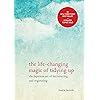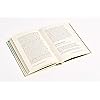


Ready to go? Add this product to your cart and select a plan during checkout. Payment plans are offered through our trusted finance partners Klarna, PayTomorrow, Affirm, Afterpay, Apple Pay, and PayPal. No-credit-needed leasing options through Acima may also be available at checkout.
Learn more about financing & leasing here.
Returnable until Jan 31, 2025
To qualify for a full refund, items must be returned in their original, unused condition. If an item is returned in a used, damaged, or materially different state, you may be granted a partial refund.
To initiate a return, please visit our Returns Center.
View our full returns policy here.
Description
1 NEW YORK TIMES BESTSELLER • The book that sparked a revolution and inspired the hit Netflix series Tidying Up with Marie Kondo: the original guide to decluttering your home once and for all. ONE OF THE MOST INFLUENTIAL BOOKS OF THE DECADE—CNN Despite constant efforts to declutter your home, do papers still accumulate like snowdrifts and clothes pile up like a tangled mess of noodles? Japanese cleaning consultant Marie Kondo takes tidying to a whole new level, promising that if you properly simplify and organize your home once, you’ll never have to do it again. Most methods advocate a room-by-room or little-by-little approach, which doom you to pick away at your piles of stuff forever. The KonMari Method, with its revolutionary category-by-category system, leads to lasting results. In fact, none of Kondo’s clients have lapsed (and she still has a three-month waiting list). With detailed guidance for determining which items in your house “spark joy” (and which don’t), this international bestseller will help you clear your clutter and enjoy the unique magic of a tidy home—and the calm, motivated mindset it can inspire. Read more
Publisher : Ten Speed Press; First Edition (October 14, 2014)
Language : English
Hardcover : 224 pages
ISBN-10 : 1607747308
ISBN-13 : 07
Reading age : 8 years and up
Item Weight : 2.31 pounds
Dimensions : 5.06 x 0.87 x 7.26 inches
Best Sellers Rank: #3,443 in Books (See Top 100 in Books) #3 in Zen Philosophy (Books) #5 in Home Cleaning, Caretaking & Relocating #104 in Motivational Self-Help (Books)
#3 in Zen Philosophy (Books):